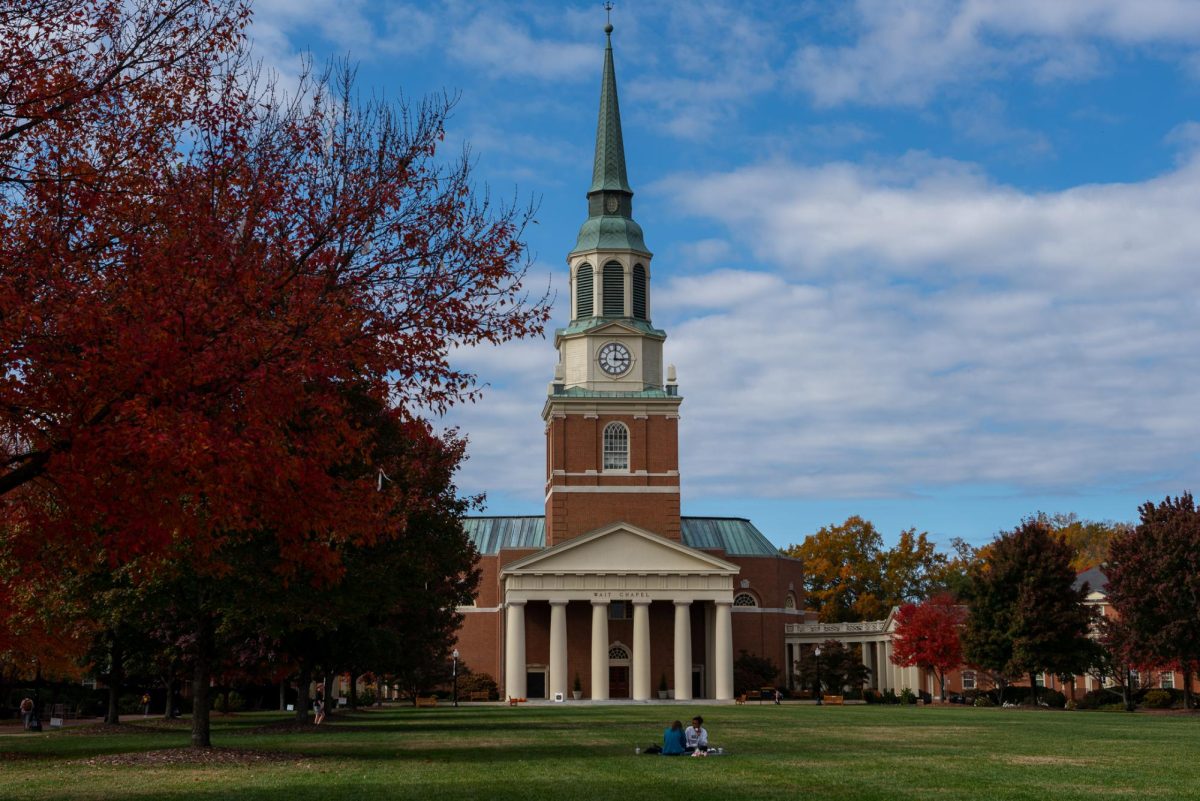To me, fall is the one season of the year when Wake Forest turns so beautiful that it seems to enclose our campus. Fall always comes with the beginning of a new school year, it’s been embedded in my memory ever since. After all, it was in fall that I first started to like my life at Wake Forest.
I still remember the first time I came to this completely strange place as a freshman. It was early autumn. The sky was blue like an endless silk scarf without interference of impurities barring the soft clusters of white clouds. These fall clouds are like a kaleidoscope, changing their shapes and postures every second, updating with new chapters of a story that are seasonally defined. During my first year, I often regarded the window as a picture frame in this season, staring at Wait Chapel and the clear sky behind it like an oil painting. To this day, I am still entranced by the sights of Wake Forest in the fall.
It sometimes seems to me that fall at Wake Forest has even more vitality than the spring. While fall may not convey the vibrancy of life as overtly or directly as the emergence of new shoots and branches in spring, its energy is articulated through the metaphor of dormancy and the cyclical nature of life. This imparts a distinctive philosophy of nature and captures the enchantment of life. Nothing is permanent. The fruits will ripen and drop in autumn, the leaves will turn golden and fall — all the vitality is hidden in the vast underground, waiting for the new year to burst again. The life of nature changes and reincarnates in this season, silently showing us that there is no need to hurry, life has its own rules and rhythms
“Autumn is the second spring when every leaf is a flower,” philosopher Albert Camus wrote. This sentence always pops up in my mind every fall season.
Standing in the autumn wind, I like to listen to the dry yet colorful leaves freely fluttering in the air and then gradually falling all over the ground. As people hurry against the wind toward their destinations, the crunch of their steps follows. Eventually, the leaves will decay, become broken pieces and sink into the soil silently, modestly. There is beauty in the process — the transformation of chaos to peace. This is also a song of life. The leaves choose to quietly integrate into the earth in autumn, waiting for another round of natural birth.
I have been at Wake Forest for three years now. I have sent away two senior classes, and I have become a junior, forced to confront the next stage of my life in the near future. It is true that the days of fall always bring people a sense of melancholy, aggravating my longing for home. As an international student, I lament how time flies and keep thinking about the past and the moments I spent with my family in weather like this. However, the natural philosophy of autumn also reminds me that the wheel of life never stops turning, maintaining the cycle and operation of life. It does not stop moving forward because a leaf is clinging to the branch, or because a person is nostalgic and stuck in the past.
Fall on campus makes me wonder if we should all live like the autumn leaves. No matter which direction they fly, they fly forward; no matter the land on which they fall, they melt into it, adapt and bravely wait till next spring.
Wake Forest has its own seasons. Each class of students will experience four years of growth until graduation and depart, just like the leaves bloom in the spring and fall in the autumn. As the old leaves fall, the new leaves will continue to bud and the everlasting cycle of life completes itself. No leaf will stay on this branch forever — it will always leave. However, I believe that the departure of each leaf signifies the coming new life. Even if we are afraid of the unknown and change, we must always face it and meet the potential it brings.
Each graduate has left a different trace on this campus — just like the fallen leaves leave a trace on the soil. They never truly leave; they just become a new leaf hanging on a different branch and accompany the campus in a more abstract form.














